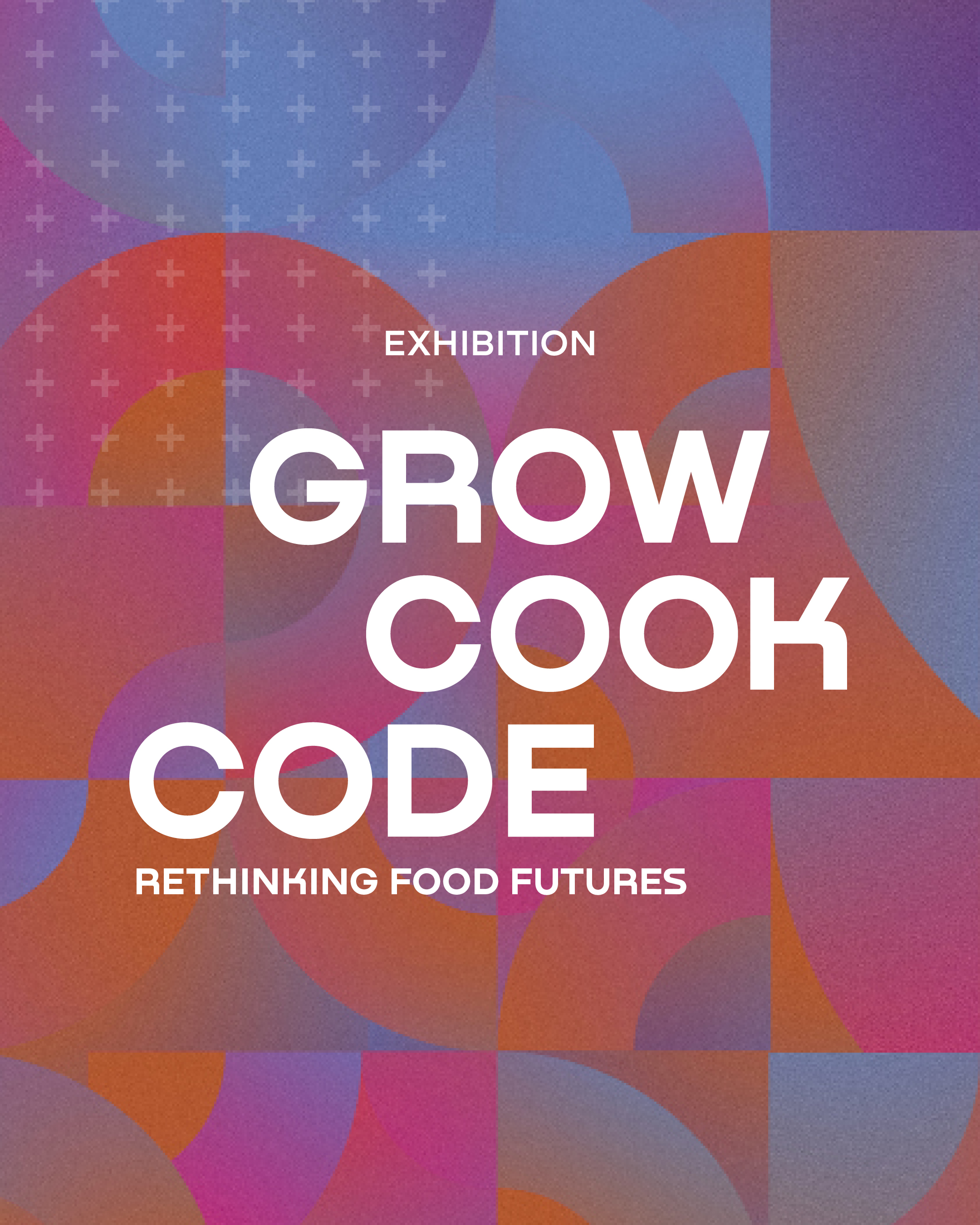- BITZ – Center for Genomic Gastronomy (USA/Netherlands) + Nicetrails (Spain)
- Fermenting Traditions – Eleanora Orteolani (Italy) & Malou van der Veld (Netherlands) + Twisted Kombucha (United Kingdom)
- SOIL AI – Michael Wallinger (Austria) + Microfy Systems (Spain)
- O.S. – Robin Jonsson (Sweden) + Dyno Robotics (Sweden)
- Nourish – Sanja Šikoparija (Canda/Serbia) + StarLab (Spain)
- Remedy Garden – Baum & Leahy (Germany/United Kingdom) + Blast Studio (United Kingdom)
- BeeSustain – Miljan Stevanović (Serbia) + BeeHold (Serbia)
- Sprout to Flourish – Magdalena Mojsiejuk (Poland) + Odd Studio (Portugal)
- Growing Futures – Daniela Amandolese (Spain) + Basque Biodesign Center (Spain)
- Neuro-Cooking – Anna Rosinke (Germany) + MBRAINTRAIN (Serbia)
- SOIL – Letizia Artioli (Italy) + Up to Earth (Italy)
In a world where nutrition and food systems are increasingly defined by speed, mass production, and resource depletion, GROW, COOK, CODE invites us to pause — and envision a new future.
This exhibition showcases the outcome of the three-year European project MUSAE, which placed artists at the heart of developing innovative and technological solutions for the complex challenges of modern food systems.
Through eleven international residencies, artists collaborated with small and medium-sized enterprises across Europe, co-shaping the future of food and critically rethinking the role of technology in creating a fairer and more sustainable future.
From depleted soil to the loss of biodiversity, from industrial mass production to the disappearance of culinary traditions — the crises of our food system are deeply interconnected. That’s why the solutions must be connected as well. MUSAE addresses these challenges through the Design Futures Art-driven (DFA) method — an approach that uses artistic experimentation and futures thinking to support companies in their digital transition in the fields of robotics, artificial intelligence, and wearable sensors.
GROW, COOK, CODE showcases the results of ten months of collaboration — 11 projects that examine different aspects of our relationship with food. Whether it’s high-tech tools for soil analysis, platforms for mapping biodiversity that anyone can contribute to, or sensor technologies for a deeper connection between our senses and the land, each project opens a space for dialogue — and offers new visions of possible futures.
The exhibition will be open from June 21 to 23 at the Palace of Science in Belgrade, aiming not only to showcase finished solutions but also to inspire new visions and demonstrate the transformative potential of collaboration between artists and industry.
On the last day of the exhibition, Monday, June 23, we offer guided tours of the art installations from 10 a.m. to 12 p.m. Sign up by clicking the link.
S+T+ARTS Academy
On Monday, June 23, the S+T+ARTS Academy will also take place in the Horizon Hall of the Palace of Science, alongside the exhibition. This one-day event is intended for artists, companies, and anyone interested in engaging in collaboration between art and technology. The Academy offers participants the opportunity to explore the potential of cooperation at the intersection of art, science, and technology, establish new professional contacts, and learn more about available European programs and funding opportunities within the S+T+ARTS ecosystem.
The Academy will include interactive presentations and guided tours, while artists from the MUSAE project will showcase their work and connect with the local creative community. Part of the Academy’s program will be conducted in English.
The detailed program of the S+T+ARTS Academy can be viewed via the link. Register for the S+T+ARTS Academy through the link.
The exhibition and the S+T+ARTS Academy are organized by GLUON from Belgium, the University of Belgrade – School of Electrical Engineering, and the Center for the Promotion of Science.
Admission to the exhibition and the S+T+ARTS Academy is free.
MUSAE is a multidisciplinary S+T+ARTS project launched by 9 partners in September 2022: Polytechnic University of Milan (Italy), Gluon (Belgium), MADE (Italy), PAL Robotics (Spain), University of Barcelona (Spain), Ab.Acus (Italy), University of Dublin (Ireland), University of Manchester (United Kingdom), and the School of Electrical Engineering – University of Belgrade (Serbia).
